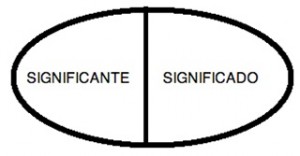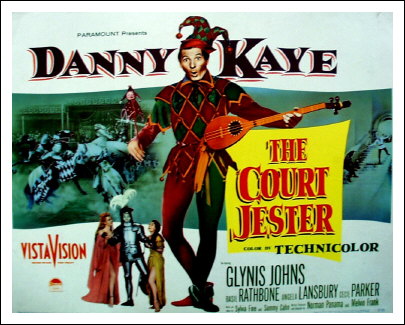-
TRADUÇÃO? NÃO, muito obrigado!
Posted on abril 25th, 2011 No comments“Happy is he who transfers what he knows and learns what he teaches.”
“Feliz aquele que transfere o que sabe e aprende o que ensina” do poema Exaltação de Aninha (O Professor) de Cora Coralina que foi poetisa e contista brasileira.Segundo consta, Cora Coralina estudou apenas até o 4º ano do ensino fundamental e mesmo assim demonstra imensa sabedoria em seus versos e contos, indício nítido de que conhecimento formal não é sinônimo de sabedoria.Mas estamos aqui para falar do por que não traduzir, ou a razão que a tradução não fomenta o desenvolvimento da fluência.Vamos raciocinando juntos.O que é uma língua?Antes de continuar a ler, pense! Ache seu próprio conceito.Muito provavelmente você deve ter pensando em: “código”, “jeito de se comunicar”, “instrumento de comunicação”, algo neste sentido. Muito bem.É correta a referência que temos de língua como algo que viabiliza a comunicação, mas não é correto defini-la simplesmente assim. Alias, definir é algo complexo vez que a definição limita quando conceitua: é ou não é, sim ou não etc… Como definir, limitar algo em constante mutação? Sim! É isso mesmo a língua muda, está em constante evolução, se adapta aos tempos, aos costumes as novas tecnologias… Quer uma prova? Um exemplo? As gírias. Elas são nítido exemplo disso. Outro exemplo: Um dos termos que mais sofreu mudança através dos tempos foi “você” que a principio era utilizado como pronome de tratamento “vossa mercê”. Com o passar do tempo, devido às influencias de outras culturas, “vossa mercê” foi transformada em “vós micê” e “vossuncê” ate chegar em “você”; se seguir neste ritmo logo será apenas e tão somente “cê”. Essas mudanças ocorreram não por normas gramaticais, mas pelo uso e costumes.O importante é perceber que uma língua é muito mais do que um amontoado de palavras e não se tem fluência ou proficiência numa língua por simplesmente ter-se um numero tal de palavras conhecidas.O modelo lingüístico mais aceito até hoje é o da Teoria Estruturalista, a qual se baseia no conceito de estrutura, que é um todo composto por partes que se inter-relacionam. Assim, o todo é maior do que a simples soma das partes. O que significa que os sistemas organizacionais não são a mera justaposição das partes. Complicou? Explicamos esta, que é a teoria que seguimos: Acreditamos que as línguas naturais são sistemas. E dentro destes sistemas os elementos de uma rede de signos se relacionam e edificam uma estrutura diversa.Ou seja, Português e Inglês são línguas diferentes, sistemas diferentes.Por fora aparentam serem iguais, mas por dentro são bem diferentes. Explico.Como línguas ambas funcionam de forma semelhante em suas sub-rotinas, o que acontece dentro delas. Todavia, cada uma tem suas próprias sub-rotinas.L1 vs. L2Desta forma quando procuramos traduzir de uma língua para outra na hora de falar ou escrever fatalmente erramos. Ao invés de significar o que pretendíamos passar para a outra pessoa em essência, erroneamente ao traduzir apenas pegamos as palavras ou signos que no idioma original passariam aquela essência como se isso fosse suficiente para no outro idioma significar a mesma coisa. Não se leva em conta o sistema e nem o que ele aceitaria ou não como gramaticalmente correto. (por isso há quem defenda a tese de que a gramática nada mais é do que a codificação do que temos no linguajar cotidiano e natural, ou seja, a gramática que acompanhe o falante nativo atualizando-se constantemente e não o contrário…)Imagine a dialogo:- Oi João, tudo jóia?- Ola Pedro, vou indo e você?Se traduzirmos- Hi Joao, all jewel?- Hello Pedro, I go going and you?Isto parece até piada não é mesmo? Por incrível que pareça, excetuando o exagero pedagógico/ilustrativo, é o que acontece ao traduzimos as frases já preparadas em nosso sistema para simplesmente usá-las traduzidas em outro sistema. No caso seria como falar Português em Inglês.Veja a agora:- Hi John, how old are you?-Hello Peter, I am 15 years old.Traduzindo…- Oi John, quão velho é você?- Ola Peter, eu sou 15 anos velho.O que lhe parece agora? Inglês em Português, certo? Curioso não é mesmo?Isso é usar o sistema de uma língua em outra língua… Ou seja, é o que lhe acontece ao traduzir. Note que “HOW”, na tradução literal, seca, pode ser como advérbio: como, quanto, quão, de que modo, de que maneira e até mesmo por que.Veja o que o “Google Translator” faz nestes exemplos:1- I have studied English for 12 years.2- I have been studying English for 12 years.1- Estudei Inglês durante 12 anos.2- Eu tenho estado estudando Inglês há 12 anos.Perceba que a interpretação não está correta, logo a tradução também está senão errada, no mínimo não exata ou imprecisa.No exemplo 1 uma versão correta poderia ser: “Eu estudo Inglês há 12 anos.” Afinal o original não se refere necessariamente a algo exclusivamente passado.No exemplo 2 a interpretação é praticamente inexistente e sobra apenas a tradução pobre em sentido, meramente literal. E como se pode perceber na língua portuguesa, em nosso sistema, não usamos a construção “tenho estado”… Ao menos não neste sentido e tampouco comumente.Mas você deve então estar pensando, e como faço? Ou, como faz um tradutor simultâneo?De forma simplista posso lhe dizer que ele entende a mensagem, o que ela objetiva significar no idioma em que ela é falada, e expressa esta mesma mensagem no novo idioma. Cada um com seu sistema.Segundo Angela Levy de 82 anos, pioneira em tradução simultânea no Brasil esclareceu em uma entrevista:- “Não é tradução simultânea, está errado! É interpretação simultânea.” E completa: “O tradutor escreve e o interprete fala.”Desta premissa fica fácil deduzir que se requer inflexão para que realmente seja corretamente interpretada a mensagem pelo receptor desta, seja ela escrita ou oral. E inflexão, para que fique claro é mudança de tom, de sentido, ou variação de desinência, a flexão imposta ou proposta ao radical da palavra ou até mesmo da frase.Relembramos que pensamento não tem língua. Ao externar o pensamento perceba que muito mais usamos a interpretação do sentido do que queremos dizer, seja ao falar ou escrever, do que a traduzimos…Resumindo, só entende de verdade quem consegue interpretar o sentido e conteúdo (“true meaning”) e não quem traduz. E só se fará entender aquele que ao se expressar significar o sentido do conteúdo de sua mensagem no sistema do idioma que estiver utilizando. E para isso existem várias formas, para nós a mais indicada é VIVENCIAR este sistema, praticando o =ouvir ==> interpretar ==> treinar ==> utilizar.
Bem é isso! Lembro que nossa intenção obviamente não foi abordar por completo assunto tão vasto e complexo. Pretendemos apenas direcionar os alunos a perceber que tradução e gramática não são ferramentas úteis em nosso método. Pelo contrário, elas agirão como inibidores de seu desenvolvimento. Ao utilizar-se da tradução você faz o mesmo que a pessoa que tem dores de cabeça constantes e toma analgésicos para tirar a dor e assim segue, cuidando apenas do efeito e não da causa, perpetuando a situação.Se desvincular da tradução requer forca de vontade, todavia é o caminho mais curto e eficiente (acredite!) para quem quer alcançar fluência.E depois de fluente, posso usar o dicionário para verificar uma palavra específica que precisaria usar, ou gostaria de saber? Como por exemplo, “submisso” ou “estetoscópio”?O que acham? Ainda que pudesse, seria realmente preciso? Vamos conversar mais sobre este assunto? Deixe seu comentário ou se preferir escreva para hidehigh@hidehigh.com.br , será um imenso prazer lhe responder!Have Nice classes!Tex.
Vamos conversar mais sobre este assunto? Deixe seu comentário ou se preferir escreva para hidehigh@hidehigh.com.br , será um imenso prazer lhe responder!Have Nice classes!Tex. -
Why is that I don’t a degree in teaching to be a good Teacher?
Posted on abril 11th, 2011 No commentsNotice that this text is addressed to teachers of MEDICAL SCHOOL.In my opinion, the text suits every one willing to be a great teacher.What do you say?What It Takes to Be an Outstanding Teacher
by W. Fred Miser, M.D.Before reading this article, take a moment to reflect on your own experiences in your education. Who were the worst and best teachers you ever had? What were the characteristics that separated the mediocre or bad teachers from those that were outstanding? Write down these characteristics. How does your own teaching reflect these traits? As a teacher, what characteristics would you like to have?Numerous studies have investigated the distinguishing characteristics of the worst and best teachers. Through the years, the results have been strikingly similar no matter the level of learner (student, resident or faculty), the specialty (family medicine, pediatrics, internal medicine, OB/GYN or general surgery), or the setting (ambulatory or inpatient).The intent of this article is to review those characteristics. As you read these, compare your list with those reported in these studies.Four Characteristics Most Descriptive of the Worst Clinical Teachers1. The worst teachers have a negative attitude toward learners. They are arrogant, insensitive and dogmatic. They ask questions in an intimidating manner and belittle students and residents. I recall in my own training a professor who was a brilliant and skilled physician who even had a disease named after him. However, he was so intimidating that students and residents would literally run down another hallway when they saw him approaching to avoid his pandering and chastisement. Although brilliant, he was unable to be an effective teacher because learners would avoid him.2. The worst teachers lack good teaching skills. They have limited knowledge and lack self-confidence. Their presentations are unorganized and boring. It is obvious that they just do not like to teach. I remember one nephrologist who, because of his research accomplishments, was given the task of teaching his specialty to second-year medical students. He made it quite clear that he would rather be in his research lab than in the lecture hall, and his teaching reflected this. His presentations were so boring that by the end of the series, the only student attending his lecture was the official note taker. The sad part is that this teacher did not even care!3. The worst teachers lack skills in providing feedback. They readily correct errors in front of others in a belittling manner while failing to recognize extra effort. They use feedback not for improvement, but as a form of judgment. Even worse, they give no feedback at all to the learner.4. The worst teachers are inaccessible. They are always too busy for the learner. They rarely make an appearance to the learner, and then rush through presentations and the teaching sessions. When needed, they are never around.Four Characteristics Most Descriptive of the Best Clinical Teachers1. The best teachers are enthusiastic and stimulating. It is easy to see that these teachers actually enjoy teaching. They are dynamic and have interesting styles of presentation. They stimulate intellectual curiosity and encourage and motivate learners to self-directed learning. They encourage active participation of the learner, and establish a positive learning environment.2. The best teachers are organized. They present material in a clear and organized manner. They make difficult concepts easy to understand. They clearly communicate to the student what is expected to be learned. They include material that is interesting, practical, relevant, accurate, in depth and up-to-date. Rather than dwell on the esoteric, they emphasize what is important.3. The best teachers are clinically competent. They are good role models as clinicians. They demonstrate skill in providing quality patient care. They work effectively with other members of the healthcare team. They have great interpersonal skills in working with patients and families.4. The best teachers work hard at developing a good, positive relationship with the learner. They have a genuine interest in learner and are aware of their needs and problems. They are available and willing to help. They provide fair and constructive criticism without belittling the learner. It is enjoyable to be in their presence.How did your list compare with those reported in the literature? How does your teaching reflect those qualities that define the best clinical teachers? Do not despair if you do not have all of the listed qualities of outstanding teachers. These qualities are, fortunately, ones that can easily be learned and mastered.A degree in teaching is not needed, instead, one needs a strong desire to excel at teaching.If you are a good clinician who enjoys teaching, has good interpersonal skills and respects learners, you are well on your way to being among the best clinical teachers.Take another moment to list those areas in which you wish to improve. As you work on these areas, seek feedback from your learners on your progress.For further reading in this area, I would recommend the following four articles:1. Skeff KM: Enhancing teaching effectiveness and vitality in the ambulatory setting.J. Gen Intern Med – 1988; 3:S26-33.2. Hilliard RI: The good and effective teacher as perceived by pediatric residents and by faculty.AJ.D.C 1990; 144:1106-10.3. Irby DM, Ramsey PG, Gillmore GM, Schaad D: Characteristics of effective clinical teachers of ambulatory care medicine.Acad Med 1991; 66:54-5.4. Irby DM: What clinical teachers in medicine need to know.Acad Med 1994; 69:333-42. -
April Fool’s Day
Posted on abril 1st, 2011 No commentsApril Fool’s Day
By Teacher Isabela
April Fools’ Day, sometimes called All Fools’ Day, is one of the most light-hearted days of the year. Its origins are uncertain. Some see it as a celebration related to the turn of the seasons, while others believe it stems from the adoption of a new calendar.
New Year’s Day Moves
Ancient cultures, including those of the Romans and Hindus, celebrated New Year’s Day on or around April 1. It closely follows the vernal equinox (March 20th or March 21st.) In medieval times, much of Europe celebrated March 25, the Feast of Annunciation, as the beginning of the New Year.
In 1582, Pope Gregory XIII ordered a new calendar (the Gregorian calendar) to replace the old Julian calendar. The new calendar called for New Year’s Day to be celebrated Jan. 1st. That year, France adopted the reformed calendar and shifted New Year’s day to Jan. 1st. According to a popular explanation, many people either refused to accept the new date, or did not learn about it, and continued to celebrate New Year’s Day on April 1. Other people began to make fun of these traditionalists, sending them on “fool’s errands” or trying to trick them into believing something false. Eventually, the practice spread throughout Europe.
Problems With This Explanation
There are at least two difficulties with this explanation. The first is that it doesn’t fully account for the spread of April Fools’ Day to other European countries. The Gregorian calendar was not adopted by England until 1752, for example, but April Fools’ Day was already well established there by that point. The second is that we have no direct historical evidence for this explanation, only conjecture, and that conjecture appears to have been made more recently.
Constantine and Kugel
Another explanation of the origins of April Fools’ Day was provided by Joseph Boskin, a professor of history at Boston University. He explained that the practice began during the reign of Constantine, when a group of court jesters and fools told the Roman emperor that they could do a better job of running the empire. Constantine, amused, allowed a jester named Kugel to be king for one day. Kugel passed an edict calling for absurdity on that day, and the custom became an annual event.
“In a way,” explained Prof. Boskin, “it was a very serious day. In those times fools were really wise men. It was the role of jesters to put things in perspective with humor.”
This explanation was brought to the public’s attention in an Associated Press article printed by many newspapers in 1983. There was only one catch: Boskin made the whole thing up. It took a couple of weeks for the AP to realize that they’d been victims of an April Fools’ joke themselves.
Observances Around the World
April Fools’ Day is observed throughout the Western world. Practices include sending someone on a “fool’s errand,” looking for things that don’t exist; playing pranks; and trying to get people to believe ridiculous things.
Check this out:
MEAN BUNNY: April Fools Prank
http://www.youtube.com/watch?v=YdwtAGIp0nQ&NR=1&feature=fvwp









